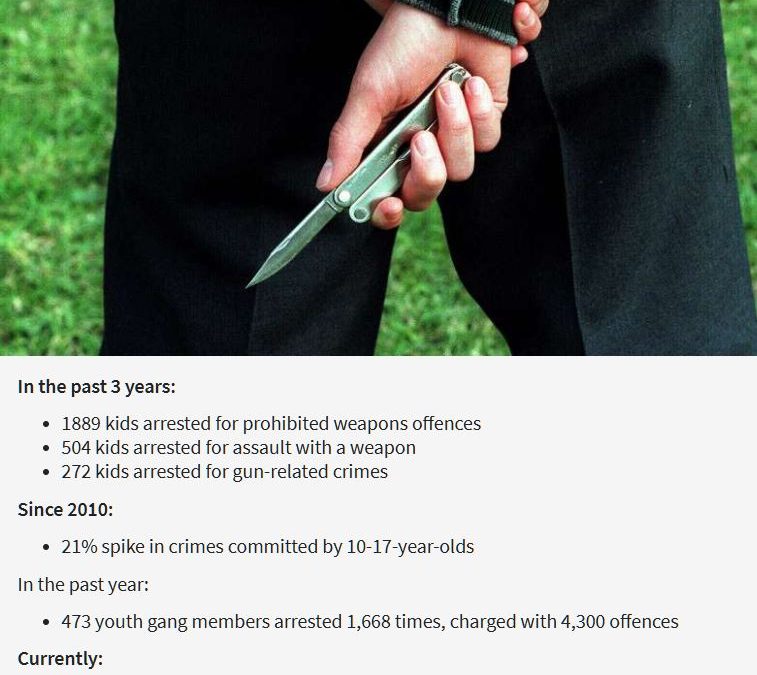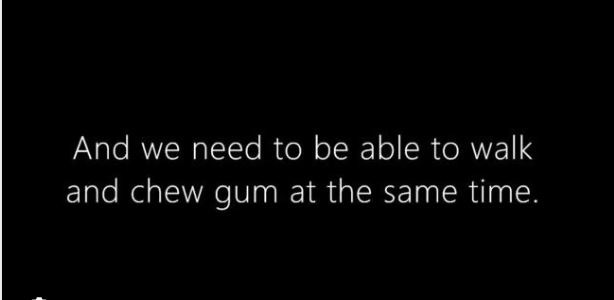
by CAA | Nov 24, 2024 | Blue Light, Current, Drunk, Library, Police in Schools, Police Veterans in Schools, Privacy, PTSD, Road Safety, Tobacco, Uncategorized, Vietnam Vets
The reports in the Herald Sun 24th November ‘24 about the escalation of violent crime by juveniles, some as young as ten, is a rude awakening for a Government that is by and large responsible.
We can expect platitudes and lame excuses, but action is improbable, and anything the Government does will skirt around the reality that they have made some major ‘faux pas in managing the youth issues.
First and foremost, the Bail Laws are a significant contributor.
The definition of insanity can be easily applied to the Victorian Government’s posture on youth crime matters.
‘Doing the same thing tomorrow and expecting a different result.’
How many of the brainiacs within the Government could have concluded that arresting a child for a crime and putting them immediately back into the same environment that caused them to offend in the first place was a brilliant idea? This is beyond reasonable comprehension.
Those responsible must be removed from their roles.
It is akin to saving a drowning child, only to throw them back in the water.
It looks eerily like the Government is focused on deliberately guiding our society towards a lawless state; we can only assume some misguided ideological plan to destroy the community fabric for an obscure reason has overtaken them, guiding them towards a catastrophe of violent crime we have never before been subject to.
The second and equal act of insanity was raising the age of criminal intent from ten to twelve years, so all the upcoming young thugs are taught crime has no consequences and they can be just like their older peers enjoying the criminal lifestyle.
This crime apprenticeship scheme must be reversed.
The major flaw in this initiative was that no thought was applied to what was to be done with the younger juveniles, as their path to criminality is well laid before they come into contact with the courts.
To make a start, the Government must undertake a ‘mea culpa’; although that concept would be foreign to them, they might wrest back some respect from the community.
There is no shame in admitting a mistake if it was done with the best intentions.
However, there is not only shame but damnation to know an error has been made and ignore it, particularly when the damage is wreaked not only on the community but also on the children the laws were supposed to protect.
There is a third flaw that contributes significantly to the crime tsunami of juveniles, perhaps more important than the others, and that is the performance, or lack thereof, of those in the Government employ (the Government’s own people) who are charged with delivering youth services.
We have seen multiple reports of this systemic failure of this Government’s function, with children who are put into care receiving nothing of the sort.
Poorly supervised and allowed to come and go as they please, no doubt to be told they are naughty, but get to keep their phones and their freedom, albeit their behaviour is outrageously dangerous to the community and themselves.
And finally, the role of the courts must not be overlooked. This lack of holding criminals to account, a concept apparently not applicable to children, can be sheeted home to the judiciary, who, by any measure, have failed in their role, particularly in relation to children.
It is the role of the courts to administer the law, not be social engineers—a social experiment by the courts that has been a miserable failure.
Placing a child in detention to protect the community and the child is in an environment the courts are not comfortable with; is not their prerogative. The Government is responsible for providing sufficient secure services for juveniles to support the Courts.
It would help if some accountability was applied to jurists.
This would not challenge the independence of the courts but may make the jurists more focused on their role and its effectiveness.
Rather than closing jails, which will incur huge ongoing costs to the State, why not convert them into juvenile facilities? After all, it is just a building; what happens inside makes it a jail or a juvenile facility.
All the contracts to operate jails slated for closure are in place and will cost a bomb to extricate from, so it makes real sense to modify rather than close them and the savings for the state will be substantial in real terms, both social and fiscal.
It won’t be long before our litigious community starts acting against the Government for the Government’s failure, resulting in the deaths and trauma inflicted by juveniles on their loved ones.
That could be a good thing, forcing the government to act.
Unfortunately, the only consequence will be a more significant financial burden on the community settling claims against the Government and the other social and financial imposts the juvenile problem imposes on all of us while the Government continues to ‘wash its hands’ of the problem, doing their ‘Pontius Pilate’ impersonation.

by CAA | May 21, 2024 | Blue Light, Library, Police in Schools, Youth
If we want to save our children, we must learn quickly, and Victoria’s Police must prioritise proactive measures to reduce crime.
In an environment where police resources are stretched, it will take strident and clever management to achieve the balance between detecting crime and stopping it in the first place; the latter is the only way to effectively reduce crime in the long term.
The Chief Commissioner’s greatest challenge is achieving effective balance and allowing VicPol to walk and chew gum at the same time.
A recent article in the Herald Sun, BULLYING REVEALED AS TOP REASON KIDS ARE SKIPPING SCHOOL by Susie O’Brien (13th May 2024), raises an argument based on empirical evidence produced by Monash University that supports the hypothesis of the CAA article ‘YOUTH CRISIS SOLUTION’, which sets out what must be done if we want to address the problem.
In other words, bullying is a significant contributor to absenteeism from schools.
Identifying truancy and its primary cause explains, in part, why we have a severe decline in academic levels. This correlates directly to the lack of discipline in schools and contributes substantially to community antisocial and criminal activity. Most crime at this level is relatively minor; however, it is the precursor for a child to live a life of crime.
We cannot expect teachers to solve this problem alone. After years of entrenched poor discipline, the reality is that some students and parents will oppose the new paradigm of discipline. This puts educators in a precarious, perhaps, dangerous position, so their role in achieving and maintaining school discipline must be supported.
As part of the Police Force charter, it must prevent crime. Using police to augment the role of Teachers is a practical and essential method of reducing discipline breaches and antisocial behaviour. Protecting students and staff from aggression is a vital police responsibility that cannot be abrogated.
The Teacher’s authority ends at the school gate, but the problems generally extend well beyond that; therefore, the solution is to use integrated Police specifically trained to deal with these matters.
Nearly half of all Victorian students are regularly truant.
‘High school students are now missing a month a year on average, adding up to more than a full year of lost classes throughout 13 years of schooling.’ -Herald Sun Suzie O’Brien
And the impact on our children is also recognised internationally.
‘Australia’s bullying rate is three times the international average and has been highlighted as a “major issue of concern” by the OECD’. -Herald Sun Suzie O’Brien
The figures, when broken down, are alarming.
‘Overall, just 62 percent of Victorian students from years one to ten are meeting attendance benchmarks, compared to 79 percent in 2015 – a 17 percent drop.
This means 340,000 students out of 895,000 are regularly missing school.
Students in year nine are the most disengaged, with only 50 percent going to school 90 percent of the time or more.
This compares to 70 per cent of students in 2015, the first year the Australian Curriculum, Assessment, and Reporting Authority collated the figures.-Herald Sun Suzie O’Brien
It is worrying that 340,00 students regularly miss school, raising an important question of what do these children do when not at school.
Most of them will not be diligently working at their academic furtherance, but too many contribute to the crime rate or develop social skills that will manifest as life outside the law and community norms.
‘Idle hands are the devil’s workshop and idle lips (or minds using social media) are his mouthpiece’.
Although we acknowledge the importance of this article in highlighting this problem, the Police themselves recognised these issues many years ago. However, supposedly enlightened Police Commissioners decided that the strategy and effort were not warranted, and even in light of empirical data that the initiative worked, they cancelled the essential programs.
Police In Schools – a curriculum-based (as opposed to recent iterations) program that could be measured and was found to be effective by Monash University.
New Start – is an innovative program that connects police and teachers to ensure children attend school.
Blue Light – Although Blue Light has survived, it is a shadow of its former self, due directly to efforts by VicPol to close it down. Incentives for police to give up their own time to operate the discos were removed, as was any other support for this program.
We acknowledge the difficulty the Police administration has in diverting Police from reactive roles to the cause of proactive ones, where the problems are avoided before they manifest. Rather than police picking up the pieces of shattered lives of victims caused partly by this problem faced by management.
This conundrum boils down to leadership and the strength of that leadership to make the necessary adjustments to deal with the long-term effects caused by the failure to address these problems at the core. Unfortunately, they must look past the quick-fix arrest solution because we all know that for most social issues, Police cannot arrest their way to solving the problem.
History will always examine an organisation’s performance in light of its leader’s effectiveness, which is no different for policing.
We can only hope that the current Chief Commissioner will leave a legacy not of sameness and incompetence, as some of his recent predecessors displayed, but one of authentic leadership by holistically handling the issue of Policing and putting in place measurable proactive initiatives that make a difference, addressing the issues before problems arise.
It is argued that:
‘We cannot afford the police resources to do it, but we cannot afford the consequences of not acting proactively’.
VicPol has the ability to walk and chew gum.


